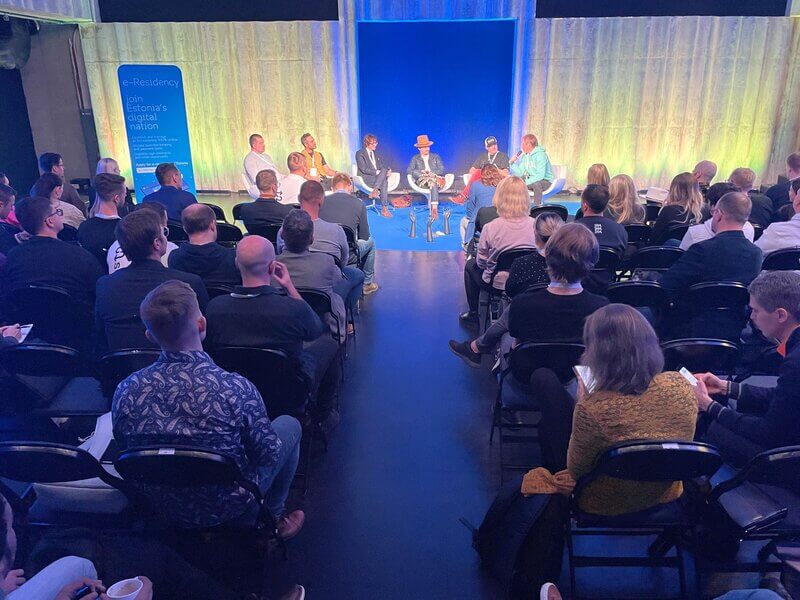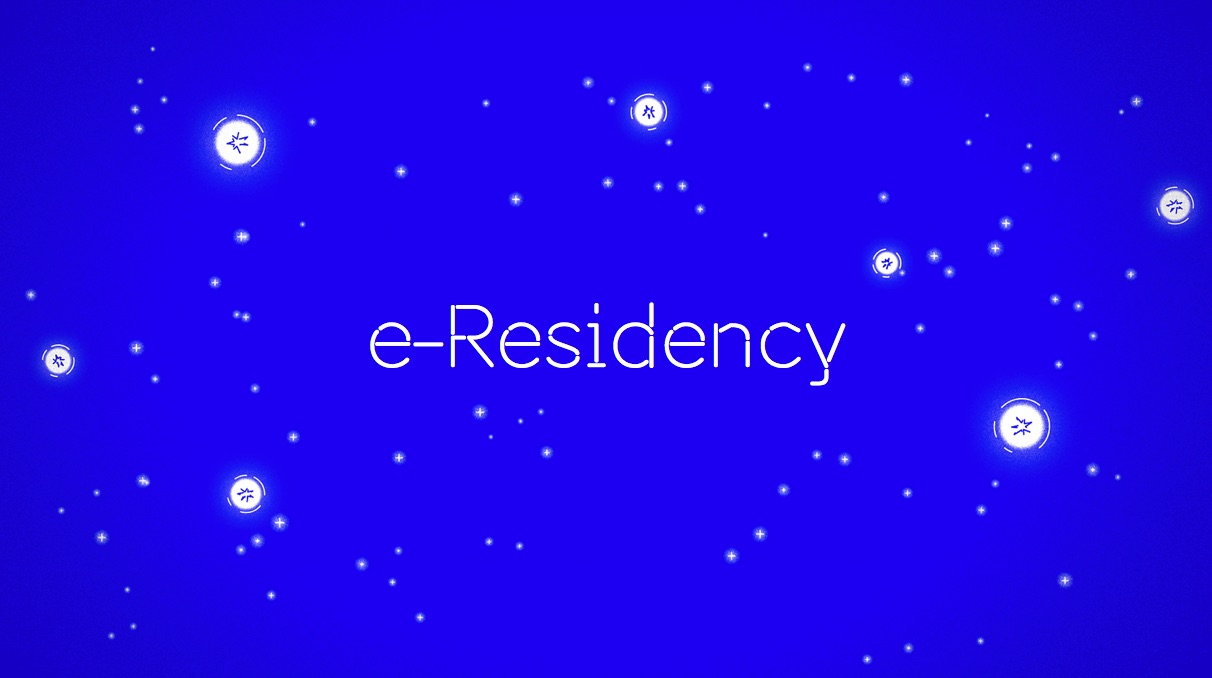virtual e-residency: a future in the metaverse?
How do e-Residency and Estonia fit into new conceptions of the virtual world? E-resident Maya Middlemiss introduces new concepts and possibilities in this op-ed.

The world is continuing to unlock around us, and bring us ‘in real life’ events, like April’s ‘NFT Tallinn’. While the event centred around new developments in the virtual world, the chance to meet in-person certainly came as a welcome relief after endless Zoom calls over the last two years. Much has also happened in that time on the frontiers of multidimensional virtual spaces. This was one of the key themes explored at NFT Tallinn. E-Residency was there and even presented a session on Merging web3 and Government-issued Digital Identities. Discussions in the session ranged through a series of interesting topics, mostly focused around possibilities of e-Residency in the metaverse.
Key concepts: NFTs, web3, e-Residency in the metaverse
But first, let’s back up with some basics of NFTs.
NFT stands for non-fungible token, (which just trips off the tongue in any language, right?) ‘Fungibility’ is a fundamental property of currency, meaning that it’s interchangeable - one euro has the same value as any other euro. Even if they were issued by different national banks in the Eurozone and have different images stamped on the coin, each one is equal to any other. A two euro coin is worth any two singles, and so on.
Thanks to the blockchain, cryptocurrencies are able to hold and convey specific value in a similar way to sovereign currencies. Therefore, one bitcoin is worth the same as any other bitcoin - so they’re pretty fungible too. And that value is secured via a distributed, decentralized, network of nodes, as part of what’s being called ‘web3’, the decentralized internet.
NFTs have the same properties of intrinsic value which are digitally coded into them. However, the difference is that each NFT is non-fungible. Or put another way, each NFT is unique. Consider them to be a currency with only a single coin minted, or a cryptographic key to unlocking certain assets or attributes. Certainly, they can be bought and sold with fungible cryptos like bitcoin or ETH (and increasingly with euros and dollars too). But each one is individual with its own unique attributes and valuation.
Most commonly today, NFTs are issued as digital artworks of some form. Anything which can be coded digitally can be secured in an NFT, and they are increasingly being used as tokens to access events, communities or locations. This is why we’re seeing more and more imaginative use cases emerging across a range of modes and markets. Indeed, many mainstream brands are hurling themselves headlong at the NFT bandwagon.
So, what about digital identity?
NFT-EID…?
After all, the Estonian e-Residency ID system has many parallels with the idea of NFTs. They are both wholly digital, and based on similar asymmetric cryptographic tools (public-private key access.)
The Estonian registry is fundamentally different in one important respect though. The present X-Road infrastructure is centralized, rather than distributed on a blockchain (although it is protected by a unique back-up data embassy as a cybersecurity measure.) You interact with trusted third parties to exchange the necessary credentials, to prove you are the person legally entitled to say pay this tax or sign contracts on behalf of that business.
With NFTs, the resilience and the proof comes from the network of nodes, and the vast number of routes between them. These reside on a public blockchain (like Ethereum or Wax). Such a blockchain is cryptographically structured such that anyone can view the required proofs of ownership, while being effectively impossible to reverse engineer to unlock the secured access. This asymmetry creates something known as a trustless system. That is, trust is not required in an environment where everything can be publicly verified.
This raises possibilities for a new generation of e-Residency in the metaverse. Could one embed all the necessary coding, including the identifiers required for banking know-your-customer (KYC) and anti-money-laundering (AML), within a single non-fungible digital token?
This might not be set on the roadmap quite yet... But just imagine the potential if you could interact securely with all kinds of individuals and institutions, in the same way as you presently interact with e-Estonia systems on the X-Road system. Every kind of information could potentially be encoded in this way, from Covid vaccination status to some kind of token economy and value exchange intrinsic to the e-Residency ecosystem. We just need to think big enough, because the potential is unlimited.

For an example, let’s go back to NFT Tallinn. At the event, Mikk Maal from e-Residency Marketplace member Comistar suggested, “how about an e-Residency NFT that can be staked and used for services or advertisement through the platform, or other benefits/utility in the future?
“The utility and means to drive benefits to token holders is quite important, as there has to be something attractive. Like the American Express card that gives discounts with rental companies, airlines, hotels, etc.”
When you consider the diversity of offerings present within the e-Residency marketplace, the potential for an internal economy is very powerful.
E-Residency in the metaverse?
What we’d be talking about is access to a wholly virtualized e-Estonia - a country you could access online, in whole new ways. The creation of a digital twin state, in the metaverse.
Yes, one more buzzword you cannot have missed, but may still be lacking a clear definition of. And like NFTs, it’s a term full of hype and not always used very precisely.
So to help pin it down, I spoke to Matthew Warneford from Dubit. He's been working in the metaverse space longer than most, and has some useful criteria for defining what a metaverse is and is not.
“The first kind of thing that you need to define a Metaverse is a 3D environment explored with an avatar”, he explained - while clarifying that the third dimension does not have to be physical, or something you can move around in a technology like VR. After all no one can deny that Minecraft, SIMs, or Second Life (remember that?) were 3D environments, although they were accessed via flat screens.
He further explained that this needs to be a hyperlinked or infinitely connected environment. Presently, what we have is a series of virtual universes, which are becoming more interoperable to varying degrees. This is why the big business battle to own the underlying platform is so hotly contested. One global enterprise even preemptively renamed itself to stake its psychological claim.
As well as a persistent avatar to represent you in the metaverse, another thing it requires, according to Warneford, is some kind of intrinsic currency:
“!t needs to have an economy, [a value exchange] that can reward the creators... And it doesn't need to be VR. It doesn't need to be on the blockchain. But it's fundamentally a social experience.”
So, there you have it. In-game currency has always been a feature of world-building play environments, and what the metaverse paradigm promises is a way to make that currency have persistent value, outside of the specific game environment. In a truly ‘meta’ virtual world, that digital currency would have the same intrinsic worth as any physical currency.
I think back to my lost Second Life login (and embarrassing avatar), and wonder what happened to my modest stash of Linden Dollars. And then reflect on the hours and hours of work my daughter and her friends once spent, creating intricate structures in Minecraft. Surely there is some value remaining in the time invested, the shareable output realized?
A gold rush in virtual real estate
Meanwhile, virtual real estate in metaverses like Decentraland, is big business. More and more brands and businesses are determinedly acquiring a foothold for themselves in something akin to a gold rush.
Decentraland has an economy which uses fungible MANA tokens, to buy and sell assets within the metaverse, and the assets themselves use LAND tokens which are NFTs. Each parcel of LAND has a unique coordinate in the virtual world, an owner, and a reference to a description file representing the content within the parcel. Everything is driven by smart contracts on the Ethereum blockchain, while MANA token holders vote on governance policy decisions - it really is its own virtual universe, with fiscal policies, economic growth, and increasing degrees of political and social diversity.
If you’re still struggling with the why of all of this, consider that Samsung, Adidas, Atari, PricewaterhouseCoopers and Miller Lite are among the LAND holders in Decentraland, and Sotheby's held its first metaverse auction there. In March 2022, Decentraland hosted Metaverse Fashion Week (with major fashion brands like Dolce & Gabbana, Tommy Hilfiger and Estée Lauder).
How many of these brands are actually sold on the metaverse as the future (vs. how many are following the crowd), who can say?
Imagining a future for e-Residency in the metaverse
But e-Estonia has always led the way, in responding to innovative opportunities, and similarly in pioneering digital identity and presence. And where else has the reservoir of tech talent combined with entrepreneurial culture, to consider building a whole country in the metaverse?
So, it’s easy to imagine the benefits of a virtual Estonia - an e-Residency in the metaverse - to house the future digital presences of e-resident businesses, campaigns, and individuals. A place where the space and possibilities are infinite, and yet virtual. This creates powerful possibilities, for example to test business cases and scenarios virtually before replicating them physically, and the deployment of automation based on insights gleaned from the virtual twin space.
There is a lot still to think about, including how the web3 space will be regulated (or not). There are many questions as to how to enable interaction between web3 with legal and business structures in the physical space. Or, the way organizational structures themselves might change to become driven entirely by software and automated decision-making tools.
But for sure, e-Residency will always bring you the best that the virtual business world has to offer, whatever and wherever that is being built in the future. Only time will tell what the form of e-Residency in the metaverse takes.
Ready to join e-Residency on this journey? Apply to become an e-resident today:
More from e-Residency
- Sign up for our newsletter
- Watch fresh video content - subscribe to our Youtube channel
- Meet our team and e-residents - register for our next Live Q&A

Social economies of virtual worlds